Posts Tagged ‘Catholic’
Thursday, April 19th, 2012 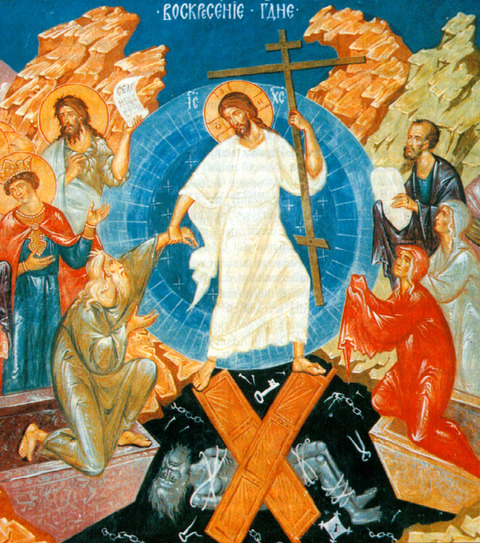
It is the first week after Orthodox Christian Easter. This year 2012, the Orthodox Christians Easter date was on fifteen of April.
We've not just had a feast of an Eastern, but we actually celebrated the greatest day in all human history that happened 2012 years ago – The Glories Resurrection of our Lord Jesus Christ from the Death in the Third day!
Some Roman Catholic Christians, might be wondering, why the Orthodox Church is celebrating one week after Jewish Pascha, so in short I will explain in the reason.We orthodox christians do not celebrate with Roman Catholics Easter because Roman Catholics use the gregorian calendar to calculate and decided the day in which the Eastern celebrations should occur, where we the Orthodox Christians use still the old moon calendar (which the jews used too), when Jesus was crucified.
The gregorian calendar is very precise from a scientific point of view, however from a Church stand point it is completely wrong because, plainly taking the gregorian calendar math model doesn't take in consideration, that the jews are still celebrating their pascha following the old moon calendar.
The consequence is this year Roman Catholics, celebrated with Jewish. This from our Orthodox Christian point of view is incorrect, because Christ's Cross suffering is the pascha for us christians.
We Christians consider that the old God ordained jewish pascha was a prophecy feast, simply to remind jewish people before Christ's coming that Messiah (Christ) will come to say his people.
As Jewish rejected their true Messiah and Crucified him on the Cross, they have rejected to accept Christ as being the true pascha lamb slained for our sins.
Hence the Orthodox Christian Church teaches even to this day, that it is not righteous to celebrate Christ's Glorious Resurrection with Jewish Pascha.
Prohibition to celebrate Easter and Jewish Pascha on the same day is an Orthodox Church rule, since the early church days.
The Holy Fathers in their Church councils Council of Nicaea etc. has established as unchangable Church rule that, Jesus's Resurrection day feath, should never-ever coincide with the Jewish Pascha Celebrations.
The reasons the Church fathers ordered the Church Easter day to be always 1 week after Jewish Pascha is our saviour Jesus Christ ate pascha with his desciples as we can read in the 4 gospels in Holy Bible. After Jesus ate pascha, he was caught mocked, tortured and crucified (killed on a cross shaped trees).
Jesus is Risen! Truly He is Risen!
The Slavonic Paschal Greeting, translated words, we use across the Slavonic dome: ( Bulgaria / Russia / Ukraine, Serbia) is:
Христос Воскресе ! Воистину Воскресе!
According to our Church Tradition, Christians should great each other with the Paschal greeting Hristos Voskrese during the whole "bright week" instead of the usual Hi / Hello phrase.
The current Bulgarian version of Христос Възкресе ! Воистину Воскресе! is
Христос Възкръсна! Наистина Възкръсна!
One great miracle that testifies about the Christ's resurrection each and every year happens on each Orthodox Christian Eastern in Jerusalem in the Temple of Holy Sepulchre (where the saviour's grave cave, before the resurrection used to be). Last year, I've written to great all Christians for the Resurrection with the joyful Paschal Greeting Jesus is Risen and the Miracle of the Holy Fire
Pitily, the number of Roman Catholics who heard or know about this amazing miracle are mostly within the clergy. Its very rare a layman Christian in Roman Catholic realm heard of the miracle. Once again as a closure I want to great everyone with the joyful paschal greeting in the manners of Russians which say it three times during the paschal period.
Христос Воскресе! Воистину Воскресе !
Христос Воскресе! Воистину Воскресе !
Христос Воскресе! Воистину Воскресе !
Tags: Auto, calendar math, Catholic, consequence, consideration, Cross, Crucified, doesn, Draft, easter date, easter this year, feast, feath, glorious resurrection, greeting, gregorian calendar, Holy, human history, lord jesus christ, math model, moon calendar, nbsp, old moon, orthodox christian church, orthodox christian easter, orthodox christians, orthodox church, pascha, paschal, phrase, prophecy, quot, reason, resurrection, Risen, Roman, roman catholic christians, roman catholics, saviour, Third, third day, true messiah, Voistinu, Voskrese, year, year 2012
Posted in Christianity | 1 Comment »
Friday, July 6th, 2012 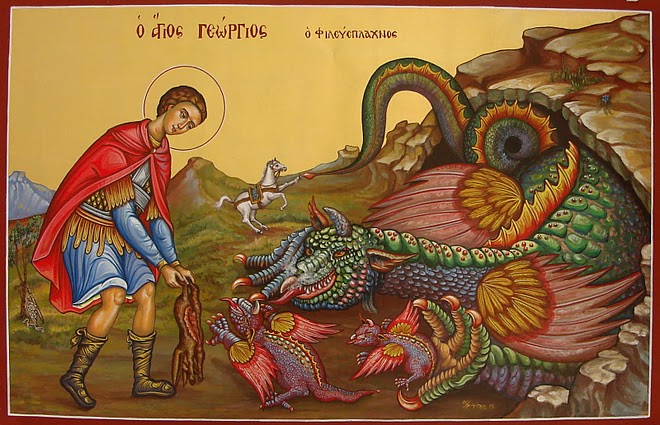
Saint George is one of the most venerated Orthodox Christian saints in the Eastern Orthodox Church. My interest in saint George is cause of the reason, I myself bear the name Georgi (the Bulgarian equivalent of George). Saint George is mostly venerated in the Slavonic Christian-dome.In almost all Church icons depicting st. George in Orthodox and Roman Catholic christiandome saint George is piercing killing a dragon.
One of the reasons, st. George is depicted piercing the dragon is a reference of st. George victory over satan, through his martyrdom.
The Beast (Dragon) on the iconi is a straight reference to the Holy Bible; Chapter Revelation also known under the name Apocalypse.
In revelation, we read humanity and our saviour Jesus Christ will finally once and for all will kill the "ancient beast" = (satan)
In same logic, as Saint Martyr George has been victorious over Satan by his unshakable confession of faith in Jesus Christ in early 5th century A.D. , we believe in the Orthodox Church he is given the crown of (eternal) life as a prize for bearing un-human tortures in the name of the of Christ.
To illustrate visually the victory of saint George over Satan through his immesurable faith confession with which he become, there is a an early tradition in iconography in the Church to depict st. George killing a dragon.
The other reason why saint George is depicted to kill a Dragon is due to a Lebanon / Palestinian ancient story saying; There was a huge Dragon living somewhere in nowdays Lebanon / Palestinian lands.
The beast created a huge havoc killing many people and systematically torturing people in the area.
As the Eastern Orthodox Christian tradition continues …. the Dragon is said to have inhabited one of the caves near some village.
Interesting, the story tells these very same dragon was the last Dragon crawling the earth before the final disappearance of dragons.
Many brave local people tried to kill the beast but many died as the beast was unbeatable.
Being unable to beat-up the dragon with a physical (human) force the local population turnted to God for help – saying continously prayers to Saint George to help them defeat their dragon mischief.
Soon after, Saint George appeared on a white horse and pierced the "old dragon / snake". The dragon liberation miracle is said to be evidenced by local people and according to Orthodox monk books is one of the many great miracles occuring in past times.
The report of the miracle has quickly spread around all Lebanon / Palestinian lands and soon, being confirmed as real spread along all Russia as well as the rest of the Slavonic and Orthodox Christian world (Bulgaria, Serbia), Greece, Egypt (Alexandria) etc..
To illustrate saint George's appearance miracle, monastic iconographers started depicting saint George as we see him until this very day – Riding a horse and slaughtering a monstrous beast.
Below are seven 12-th century early icons of saint Saint Great-Martyr George killing the dragon;;
I've collected the icons from various website online. Hope this collection will be blessing for all Christ brother and sisters and generally anyone reading this post:
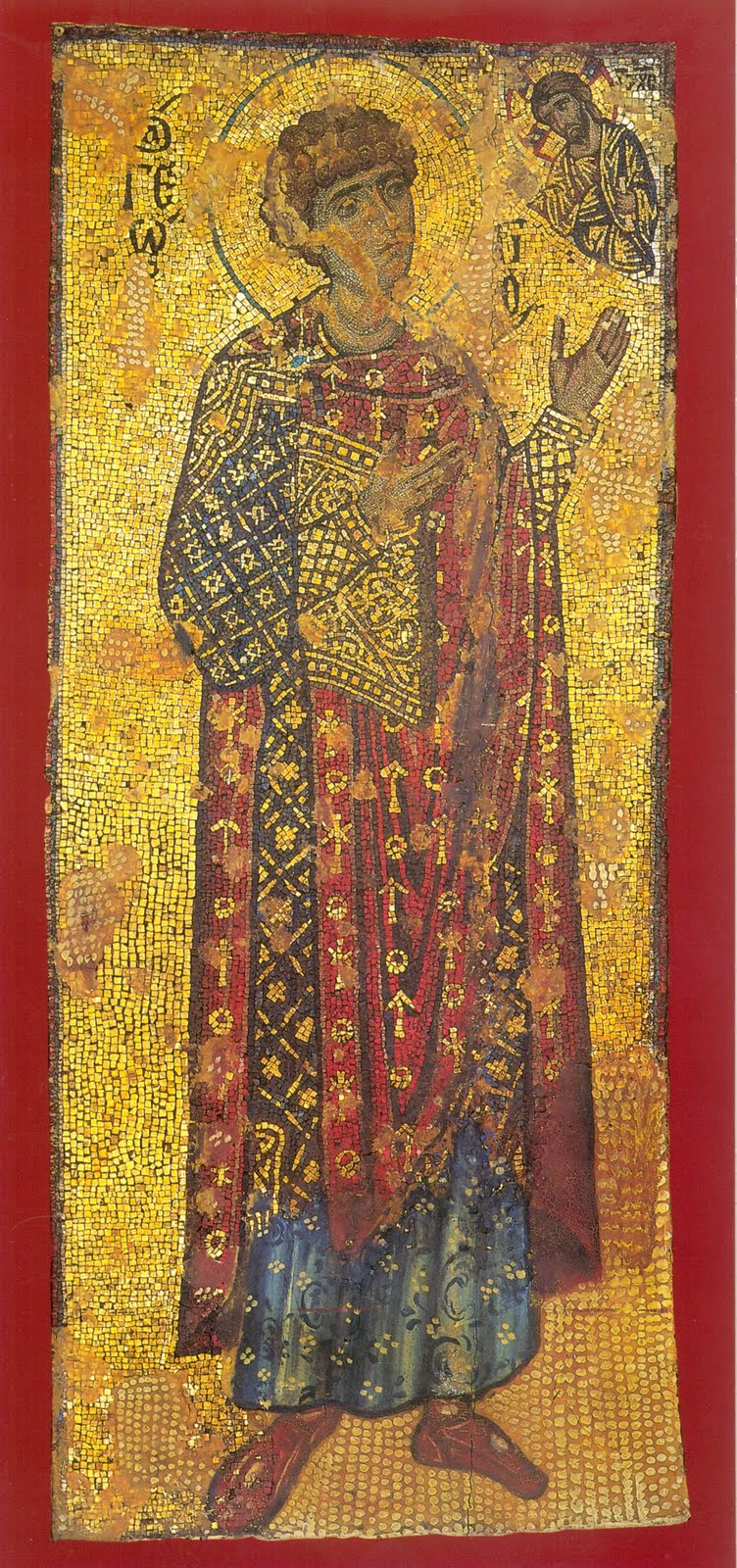
12-th century mosaic icon of st. George the Great Martyr Xenophontos Monastery
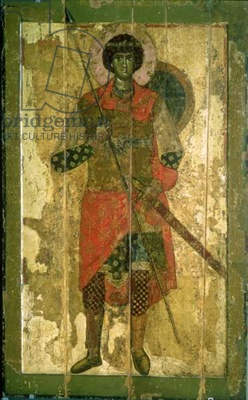
Orthodox Christian icon saint George dated to 1130 – 1150 A.D.
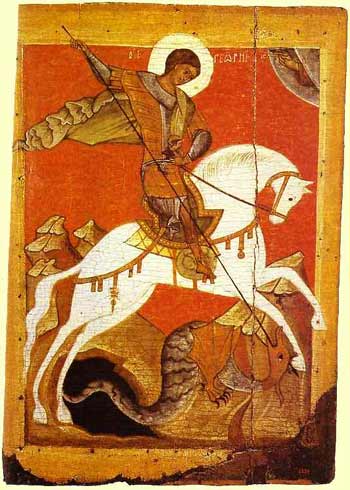
Saint Georgius the Dragon Slayer icon XII century orth icon
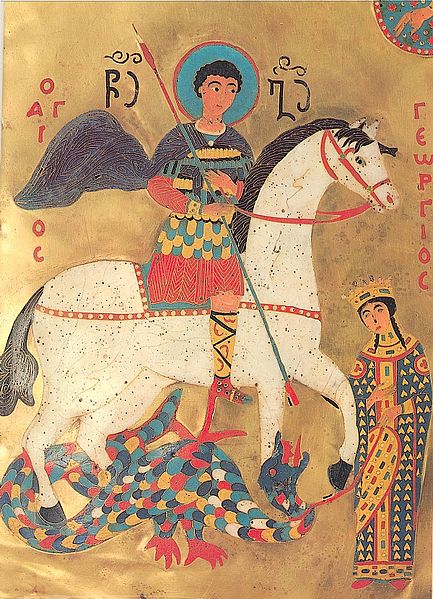
St. George Enamel icon Georgia 12th century
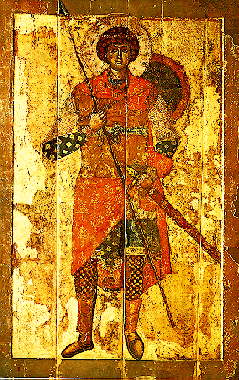
saint George Christian icon Yuriev Monastery Novgorod 12th century
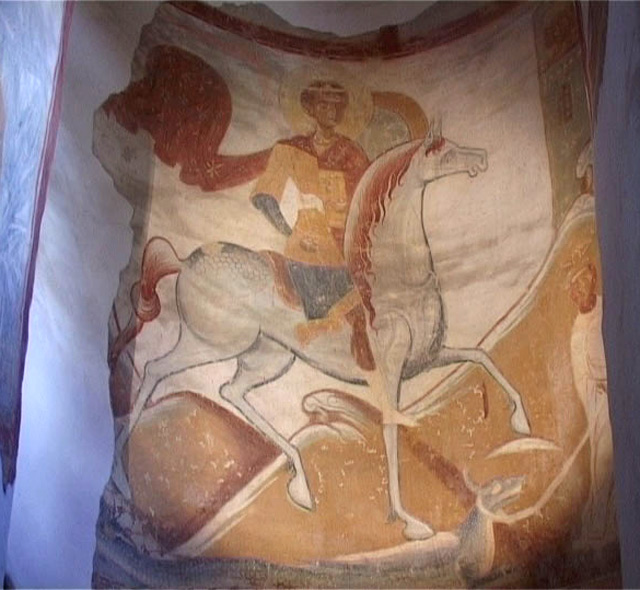
st. George Staraya Ladoga Orthodox Christian icon
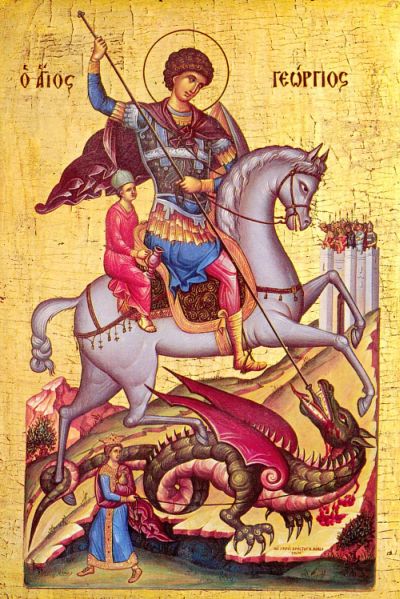
sv. Georgius 12th century Aios
Nowdays saint George Holy Relics particles are kept for veneration in many Orthodox Christian countries monasteries. Here in Bulgaria saint George Holy Relics are kept in a Monastery nearby the seacoast in Pomorie. Any Christian visiting Bulgaria have the opportunity to venerate the Holy in (Pomorie's Monastery – St. Great Martyr Georgi.
Tags: ancient beast, Auto, beast, bible chapter, Catholic, cause, christiandome, church icons, confession of faith, Draft, drago, dragon, eastern orthodox church, eternal life, faith confession, georgi, Georgius, havoc, help, holy bible, interest, jesus christ, kill, last, last dragon, Lebanon Palestinian, martyr george, martyrdom, miracles, Monastery, monk, nowdays, orthodox christian saints, orthodox christian tradition, palestinian lands, pomorie, quot, reading, reason, relics, report, revelation, Roman, Saint George, satan, saviour, saviour jesus christ, st george, story, tortures, victory, village
Posted in Christianity, Various | 1 Comment »
Tuesday, April 13th, 2010 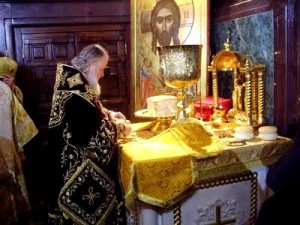
Yesterday, while browsing randomly I came across an interesting Roman Catholic webpage.
The website is created by Catholics with the idea to better explain the Catholic religion and Symbolism.
Though as an Orthodox Christian, my interest towards Roman Catholicism is only scientific, it's really interesting to see the common symbolism surrounding Roman Catholicism and compare with the Orthodox Christian symbolism. Many of the Roman Catholic Symbols are equal symbol with the one we nowadays used in the orthodox church.
I presume this common symbolism between Orthodox and Roman Catholic church,has stayed the same from the time before Roman Catholics split from the Only Holy Apostolic Church to become the Church of the West Roman Empire, that's how the naming Roman Catholic came forward.
To find out more about Roman Catholic symbolism please see the following links I've mirrored the information from Fisheater's website which is btw is a great website targeting Roman Catholic layman. Everything on the website is explained in a simple everyday language without too much terminology which makes it a great resource for Roman Catholic Christians and people like me who who like to take a look in Roman Catholicism.
It's really a strange and intriguing fact let's call it a "co-incidence" that the inverted cross (upside-down) cross,also called "Peter's cross" on which saint Peter was crucified is also a symbol of Papacy .
It's a popular fact that nowadays Satanist use a similar inverted cross to the one said to be symbol of papacy for their "Black Masses" (Satanic Masses). Maybe some Roman Catholic priest or Cardinal has to explain, how comes that the Roman Catholics ended with such a significant symbol used nowdays in anti-christian satanic religion to be also a symbol of their beloved Pope??
I will skip forward to the heart of this article, which is to explain the Christian Symbolism which is important for us the Eastern Orthodox Christians. Many of the symbols might have in common, also with other Christian early Churches like the Coptic Oriental Orthodox Church, the Armenian Apostolic Orthodox Churches and other Chruches which somehow are closer to the One Holy and Apostolic Church – the Orthodox Church but officially are not in communion with us the Orthodox Christians.
Here I'll share only the most notable Christian Symbolism which is also used in the Eastern Orthodox Church.
Many of this symbolism was always bothering me while in Churches or Monasteries and was always pushing me to more and more questions without answers, thus I finally did some research on this symbols in get a better understanding on my Orthodox Christian faith.
Since I don't have a Theologian education and many of us the ordinary layman's in the church doesn't have such education I hope this orthodox Christian symbolism shared here and it's meanings will be of interest and will help you fortify your good faith in God and our Orthodox Christian faith.
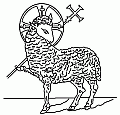
Lamb
Lamb: symbol of Christ as the Paschal Lamb and also a symbol for Christians (as Christ is our Shepherd and Peter was told to feed His sheep).
This symbol is also presented in Bulgaria on the little yellow book they sell in our Bulgarian Orthodox Churches.
This tiny book contains the Divine Liturgy compiled by God's inspiration by st. John Chrysostom
If you're coming from an Catholic Background and you hold interest for Orthodox Christianity, as historically East Orthodox Christianity Symbol of Faith as well as basic doctrines were kept untouched, you might consider reading online here The Divine Liturgy by St. John Chrysostom
It's really important to say that the Divine Liturgy by St. John Chrysostom is the "backbone" of the church life, since it's the main and most served Liturgy in the eastern Orthodox Churches around the world.
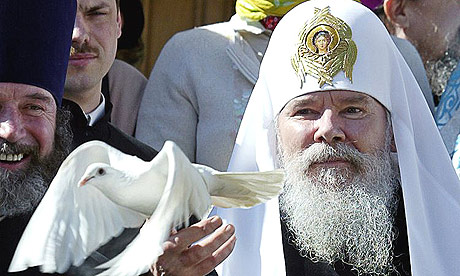
Dove: symbol of the The Holy Spirit and used especially in representations of our Lord's Baptism and the Pentecost. It is also used to recall Noe's dove, a harbinger of hope.
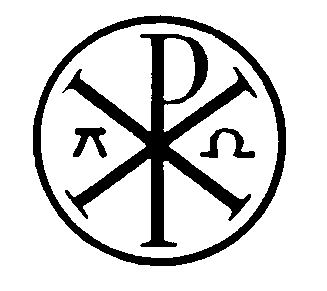
"Chi-Rho" or "sigla": the letters "X" and "P," representing the first letters of the title "Christos," were eventually put together to form this symbol for Christ ("Chi" is pronounced "Kie"). It is this form of the Cross that the Emperor of Byzantia Constantine saw in his vision along with the Greek words, TOUTO NIKA, and which mean "in this sign thou shalt conquer.

"thau" or "tau": the T-shaped cross is mentioned in the Old Testament and is seen as a foreshadowing of the Cross of Christ.
Ezechiel 9:4:
"And the Lord said to him: Go through the midst of the city, through the midst of Jerusalem: and mark Thau upon the foreheads of the men that sigh, and
mourn for all the abominations that are committed in the midst thereof."
I've noticed that the tau_cross is often worn by Orthodox Monks as "a badge" on their clothes somewhere in the right of their chest
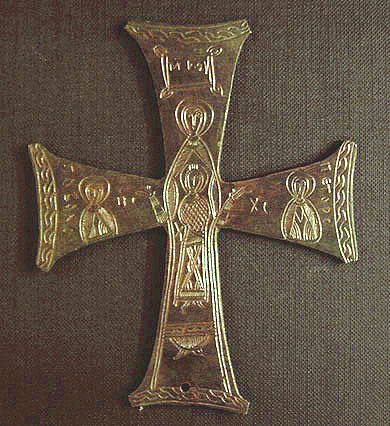
The Greek Orthodox Cross This symbol is one of the earliest Christian symbols which emerged right after Christ's resurrection.
The Greek Cross has all fours members the same shape and form (crux quadrata) and usually suggests the Christian church rather than a symbol of Christ's suffering.

Jerusalem Cross: also called the "Crusaders' Cross," it is made up of 5 Greek Crosses which are said to symbolize a) the 5 Wounds of Christ; and/or b) the 4 Gospels and the 4 corners of the earth (the 4 smaller crosses) and Christ Himself (the large Cross). This Cross was a common symbol used during the wars against Islamic aggression. (see less stylized version at right)

Baptismal Cross: consisting of the Greek Cross with the Greek letter "X", the first initial of the title "Christ," this Cross is a symbol of regeneration, hence, its association with Baptism. Usually the Orthodox priest dress is decorated with a sign like this.

The Scarlet red Egg:
Church tradition has it that St. Mary Magdalen went to Rome and met with the Emperor Tiberius to tell him about the Resurrection of Jesus. She held out an egg to him as a symbol of this, and he scoffed, saying that a man could no more rise from the dead than that egg that she held could turn scarlet. The egg turned deep red in her hands, and this is the origin of Easter eggs, and the reason why Mary Magdalen is often portrayed holding a scarlet egg.

Ichtus (Ichthys) – The Fish:
Fish: the fish — ever-watchful with its unblinking eyes — was one of the most important symbols of Christ to the early Christians. In Greek, the phrase, "Jesus Christ, Son of God Savior," is "Iesous Christos Theou Yios Soter." The first letters of each of these Greek words, when put together, spell "ichthys," the Greek word for "fish" (ICQUS ). This symbol can be seen in the Sacraments Chapel of the Catacombs of St. Callistus. Because of the story of the miracle of the loaves and fishes, the fish symbolized, too, the Eucharist (see stylized fish symbol at right). Important note to make, here is that nowdays this sign's variations is not too often to be seen in Orthodox Churches. It's highly adopted by protestant Christians, seeing this sign on somebody's car or inside his home is a sure sign that probably he adhere's to Christian teachings different from orthodoxy.

The Alpha-Omega symbol
Alpha, the first letter of the Greek alphabet, and Omega, the last letter of the Greek alphabet, became a symbol for Christ due to His being called "the First and the Last." The roots of symbolizing these attributes of God go back further, all the way to the Old Testament where, in Exodus 34:6, God is said to be "full of Goodness and Truth." The Hebrew spelling of the word "Truth" consists of the 3 letters "Aleph," "Mem," and "Thaw" — and because "Aleph" and "Thaw" are the first and last letters of the Hebrew alphabet, the ancients saw mystical relevance in God's being referred to as "Truth." At any rate, the Greek Alpha and Omega as a symbol for Christ has been found in the Catacombs, Christian signet rings, post-Constantine coins, and the frescoes and mosaics of ancient churches.
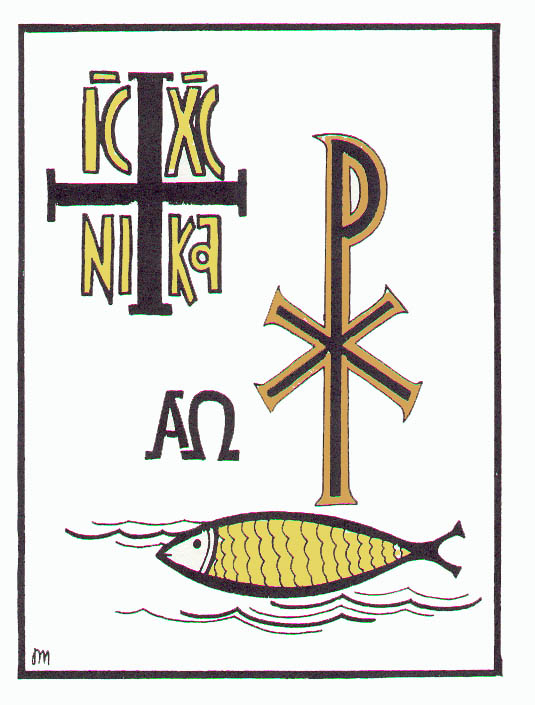
The "IC XC Nika":
comes from Ancient Greek and was a widespread ancient Christian Symbol which is nowadays still present in the Eastern Orthodox Churches. IC XC Nika literally translated to english means "IC XC = Jesus Christ, NIKA = Glory to". In other words translated to modern english IC XC NIKA means Glory be to Jesus Christ!
Many Protestant Christians, nowdays falsely believe and claims this fish Christian symbol preceded the Crucifix as a symbol of veneration of Jesus and his Cross sufferings in the Church. This kind of belief is a falsely spread along many Protestant or "Evangelical" Christian denominations and Methodists. to be seen in many ancient Christian Church buildings is a Christian symbol. Today, some ancient Orthodox Churches still contain the "Christian fish" symbol. The reason why this symbol was used by early Christians is as a remembrance of the great miracle of Jesus to feed 5000 with 2 fishes and seven breads.
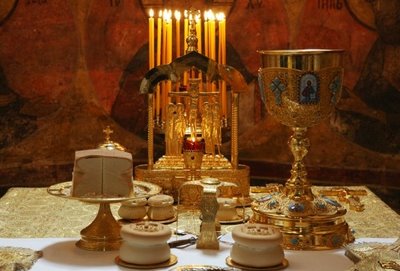
The Holy Eucharist vessels used by Orthodox Priests This is the cup of salvation as also called during the Divine Liturgy each time, the Wine and the Blood that the priest prepares in that Holy Cup is transformed by The Holy Spirit into a veracious flesh and blood of our Lord Jesus Christ.
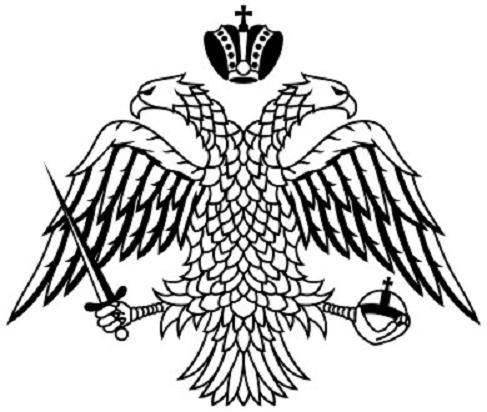
The byzantine coat of arms
is an ancient Christian symbol used in the early Byzantine Church, nowadays it can be observed only in the Orthodox Churches.
It symbolizes the power of the Byzantian empire under the guidance of the the Holy Lord and the Gospel Truths.
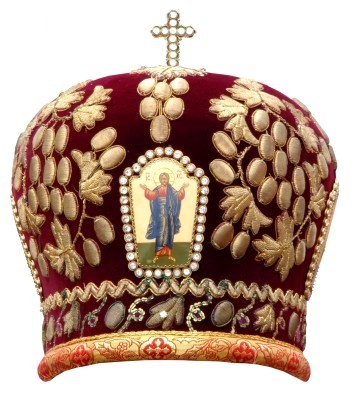
The Orthodox Bishop Crown is only worn by Bishops in the Orthodox Church. This crown indicates the Bishop's Church and spiritual (rank) and dignity.
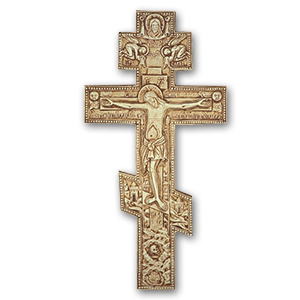
Byzantine Orthodox or Russian Orthodox Cross
Is used most often by Eastern Catholics and Russian Orthodox, this Cross is the Byzantine Cross with the footrest at a diagonal. This slant is said to represent one of a few things:
– the footrest wrenched loose from the Christ's writhing in intense physical suffering; lower side representing "down," the fate of sinners, while the elevated side represents Heaven;
– the lower side represents the bad thief (known to us as Gestas through the apocryphal "Acts of Pilate" ("Gospel of Nicodemus") while the elevated side to Christ's right represents the thief who would be with Him in Paradise (St. Dismas);
– the "X" shape of the slanted "footrest" against the post symbolizes the cross on which St. Andrew was crucified.
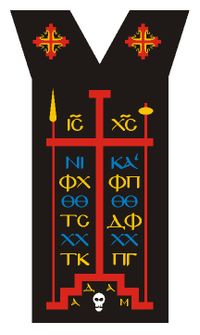
The Megaloschema is a dress worn by schimonks. This monk rank is actually the highest possible rank an orthodox Christian monk can achieve. The symbolism on the dress is a brief form of:
- IC XC (IECOYC XPICTOC) "Jesus Christ"
- IC XC NIKA ("IECOYC XPICTOC NIKA") meaning: "Jesus Christ is Victorious"
The letters below IC XC Nika has a meaning – The Light of Christ shines on all.
- XX. X.X letters. – means "Christ bestows grace on Christians"
- The 4 Thitha (called) signs are a symbol for: Vision of God Divine wonder
Then the
- T. K. P. G – Means "The Place of the Skull becomes Paradise"
- The text placed in the lowest translated to English is "Adam – The First Man" and also is a symbol for the Place of the Skull (Golgotha).
- In the Orthodox Church and the Church fathers teaches us that Golgotha or the Place of the Skull is the Place where the first man (Adam) was buried, and by God's divine providence coincides with the place where our Saviour Jesus Christ was crucified.
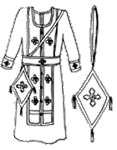
Orthodox Priest dress / robe
This dress is only worn by Orthodox Christian Bishops.
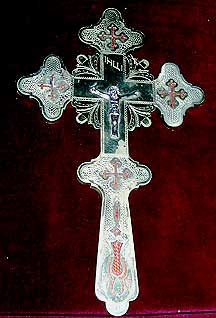
The Cross with four lights emitating near the center of the cross This cross is actually used in more modern times as a Christian Orthodox symbol, The four lights coming out of the cross are added,
as the gospels speak that Christ is the Sun of righteousness
I've had quite a long time trying to figure out why exactly this cross is made with this 4 lights. It was a real joy when one time a priesttold me the meaning.
It's interesting fact that most of the Roman Catholic's crosses nowdays have the four lights radiating from Christ's Crucifix or the Cross symbolizing the Crucifix.
This is all I will say for symbolism for now. I hope this Christian symbolism will shed some light on the matters of Symbolism in both the Orthodox and the Catholoic eastern Church. I'll be glad if somebody out there more literate on the subject comment on my post and correct me if I'm wrong with smething.
Tags: Baptism, bishop, black masses, Catholic, catholic layman, catholic religion, catholic symbols, Chi, christian symbolism, church symbolism, church symbols, city, common, Cross, divine, Divine Liturgy, Dove, dress, East, eastern orthodox church, egg, Egg Church, fish, holy apostolic church, interest, interesting fact, intriguing fact, inverted cross, Kie, long time, midst, nbsp, nowdays, Old, orthodox christian faith, orthodox christians, orthodox priests, Pentecost, priest, questions without answers, quot, reason, resurrection, right, righteousness, roman catholic christians, roman catholic church, roman catholic priest, roman catholicism, roman catholics, roman empire, Russian, saint peter, side, sign, Some of the most important Symbols for Orthodox Christians in The Eastern Orthodox Church - Symbols in the Eastern Orthodox Christian Faith (Eastern Orthodox Symbolism) and Christian Symbolism in the , Spirit, suffering, symbol, Thaw, theone, website, western catholicism
Posted in Christianity | 31 Comments »
Thursday, February 16th, 2012 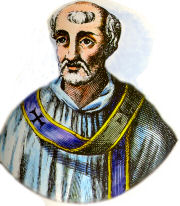
Linus's name is encountered once in the Scriptures (The Holy Bible) in the second book part of the New Testament scriptures:
I really like King James English version of the bible, here is the text extracted from there, mentioning Linus's name:
2 Timothy 4:21
Doe thy diligence to come before winter. Eubulus greeteth thee,
and Pudens, and Linus, and Claudia, and all the brethren. (From KJV 1611 Translation)
Here is a modernized version of the same verse taken from the New American Standard Bible Version (1995):
2 Timothy 4:21
Make every effort to come before winter. Eubulus greets you,
also Pudens and Linus and Claudia and all the brethren.
- New American Standard Version (1995)
Other curious fact maybe, even uknown to Linus Torvalds himself is Saint Linus used to be the first bishop of Rome, after the Apostles bishopship.
This makes Saint Linus the second in place Roman Catholic Pope after Saint Peter in early Western Church. There are some early sources which says Pope Clement I was the second pope of Rome, however probably this sources are erroneous, since some very important early written sources like the Apostolic Constitutions states Linus was the first bishop of Rome and was ordained by St. Paul. The same documents says Pope Linus was succeeded by Pope Clement – ordained by saint Peter.
Below's paste is taken directly from BibleGateway.com cofirming about Pope Linus being the sacond Roman Catholic Pope:
Linus
(a net), a Christian at Rome, known to St. Paul and to
Timothy, (2 Timothy 4:21) who was the first bishop of Rome after the apostles. (A.D. 64.)
Something Pope Linus is known with is, to have issued a church decree that woman should cover their heads in church.This ancient church tradition is still observed more or less in the Orthodox Church. It is not known much about how Saint Pope ruled the early Western Church but since the western and eastern Church used to be in communion in these early days, this means the nowdays Roman Catholic saint Linus is probably a saint in the Eastern Orthodox Church as well.
According to some unprovable written sources Pope Linus later suffered martyrdom and was buried in Vatican Hill next to saint apostle Peter.
St. Linus according to Church tradition passed away in the 1st securury A.D.
Below's paste is taken directly from BibleGateway.com a multilingual website location for reading the bible
Linus
(a net), a Christian at Rome, known to St. Paul and to
Timothy, (2 Timothy 4:21) who was the first bishop of Rome after the apostles. (A.D. 64.)
I've merged a picture of how saint Linus used to look with one of the pictures of Linus Torvalds. It's rather funny they actually look alike 😉 🙂 🙂
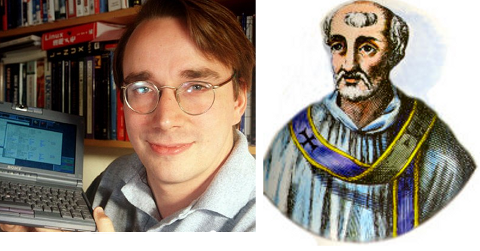
The creator of GNU/Linux kernel Linus Torvalds might not be a saint in Christian sense, but his deed is definitely saintly as he initiated the creation of the Linux kernel and decided to share its source and publish it under GPL (General Public License).
The phenomenon of GNU / Linux Free Operating System existent today and specific type of development is definitely a miracle. The general philosophy of sharing with neighbor your software is also very close to the Christian philosophy of sharing. Actually too many of the ideas of the free software and "open source" movements resemble purely Christian ideas.
The software sharing philosophy has become a reality thanks to Richard Stallman and his GNU Project, however the existence of GNU / Linux as a complete operating system become reality thanks to the Linus torvalds kernel efforts which is known under the code name Linux. Talking about names, maybe not much will know, that Linux kernel used to have a different name in the early stage of its development, its first code name was FreaX
Tags: American, apostolic constitutions, Auto, bible version, bishop, bishop of rome, Catholic, catholic saint, church tradition, com, curious fact, Draft, effort, Eubulus, first bishop of rome, greeteth, Holy, holy bible, King, kjv 1611, linus torvalds, linux kernel, new american standard bible, new testament, nowdays, orthodox church, philosophy, place, pope clement, pope linus, quot, Roman, roman catholic pope, saint linus, saint peter, second, software, standard, testament scriptures, text, thy, Translation, verse
Posted in Christianity, Curious Facts, Everyday Life, Linux | 5 Comments »
Thursday, June 21st, 2012 I just came home from a short 4 days trip to Romania. I'm truly impressed by the beauty, the people goodness and their piety.
Over the last few years, I've visited Romania numerous times, most of the times I just crossed by car while traveling to Holland. My impressions the previous years were quite good already but I didn't have the opportunity until now to see how the country looks "from within" – I mean how the life flows there etc.
I've heard quite a lot of BAD thinks about corruption (from european parliament critics in new) and gipsy like people and plenty of bad stuff over the years.
This is all lies, the country people are not corrupt, they're just smart and find plenty of ways to earn money. For instance while I was traveling there were Romanians people selling raspberries brought by the nearby woods, the raspberry selling is not entering the treasury of the country and this is considered by the European Union corruption and a crime 🙂
Well talking about police, they're a bit corrupt and stopping you for no reason sometimes to ask if you can give them some coffee or cigarettes but i wouldn't put this police act as corruption it is rather an act the patrol police do in order to find some extra cash near the low sallaries received for serving in police 🙂
Well anyways my trip to Romania here are few of my travel notes. The whole travel Route was Bulgaria – Romania, the aim of my travel can be classified as business trip, since I was travelling with a relative's husband who was their to transfer some physical goods (a kind of logistics). The wohle trip started from my hometown Dobrich; we went through Silistra and Ruse and then the so famous Danube bridge. The roads in Bulgaria are not perfect and some regions were full of road holes, but this is normal since we have a harsh winter here and now a road recovery works are in progress on the roads. Crossing the Danube bridge, there is a custom police and they charge something like 23 BGN (Bulgarian levs) for crossing it. Then there is a border police check which as most people who travelled by bus or car over borders (out of Schengen) knows pretty well. You have to hand in your ID and it is checked by a policeman and if you're not in the list of WANTED CRIMINALS 🙂 they let you go. Some 500 meters or a 1 kilometer after that is the Romanian border police which (since not part of Schengen yet checks your traveller ID again).
In Romania we travelled through Gurgevo which is one of the closest cities to Danube river bridgeroad and one of nearest romanian cities to Bulgaria.
Our first destination was a place in Romania called Targo Mures, to go their our route passed through the side road of Bucuresht – Bururesti as Domneles (misters) calls it.
As I'm trying to live an Orthodox Christian life the most striking think from the moment we entered Romania to the one we went off it was the number of Churches, Crucifix and religious references one can see by just crossing the country roads.
Many villages in Romania had 2 or 3 Churches a small chapels a Cross on the road sidewalks etc. Even many Romanian houses almost everywhere had a Christian Cross on top of the house or on the house door. Putting a Christian cross on top of your home is something I myself has thought of and wondered why Christians did not put here in Bulgaria and other Christian countries seeing this being a reality in RO-MANIA 🙂 was unexpected.
Other from my impression is that Romanian people work hard and a lot of them live in the village, owning a small land to grow vegetables and animals (sheeps and cows) mostly. While driving we saw on many places shepherds with large herds of sheeps, people mowing and generally many people who seemed to be working hard to grow their own food. This really made sense since here in Bulgaria grievously animals are rarely grown by country people and most people are living in cities (our rural population is very small).
Growing myself vegetables and having sheeps and living a village life is one of my dreams so seeing so many people growing big portion (if not all of their food on their own) especially in this crazy super-market times is really something that gives me hope, we're not completely doomed yet.
Biggest part of Romania is Orthodox Christian, while the deep central part and the western part is Roman Catholic. Nomatter the differences between the two the people in both parts seemed to live in piece. The western part was visibly more developed than the eastern.
In my observations the western part of Romania is highly influenced by Hungarian culture and architecture, while a lot of Hungarians live their today. We went through Sigishuara which seemed to be mostly Roman Catholic though I saw some Orthodox Church too on the city center. Sigishuara is amazingly beautiful. The people we met all throughout the trip was extremely friendly and always wanted to help and threated us like true Christians, something one can rarely see happening nowdays …
Most of Romania we travelled is mountain covered and the air was extremely clean, so when you're even breathing you feel very different and alive if compared to whether in my hometown.
Brasov is one of the big cities in Romania but its construction is not too much concentrated, the city is quite scattered consisting of neap houses up to few stages per hight. Generally in Romania I haven't seen too high buildings almost anywhere, in Bucurest there are some but still they're not so tall as the blocks in Bulgaria or some other ex-communist countries.
Something interesting about Brasov is that near it is Transilvania and a castle in a small village (or town) called Bran, the castle is dating back from the 12 century and is told to be the original castle where Count Dracula lived. Perhaps the region is filled with Vampire stories but unfortunately my knowledge in Romanesco was so poor so I couldn't get into contact to locals to ask for that (neither I had the time to).
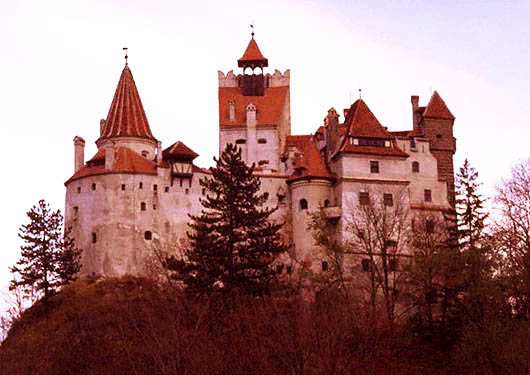
Bran castle was restored a couple of times and has been a host for the royal family of Romania (many Romanian kings, princesses) through the middle ages in Communistic time it was abandoned and just recently it was turned to a cultural museum (probably part of UNESCO).
The castle is located on a high rock and near it is a beatiful garden and an old times mention. In the castle there are plenty of objects left and traditional princess dresses, pictures, a cinema room, an ancient torture room and plenty of other medievel furniture.
The price was normal 25 LEU (the romanian currency), this equals to something like 6,5 EURO.
On the road, while travelling in Romania on many places you see the signs reading <b> DRUM BUN</b>: which in English means <b>"Have you a good trip"</b>.
During our way back from Bran we travelled through another mountain region – Sinaia.
The prices of food in the super-markets in Romania are quite almost same like in Bulgaria and if compared to western europe many products can be considered even cheap. The quality of food I found to be quite satisfying. A lot of people in Romania are still selling home made yellow cheese and natural grown products in villages as well as I've seen plenty of this street old fashioned tradesman which I like so much on the streets. The country roads especially the central ones and highways were quite good too. Well there is a lot to be said but unfortunately I don't have the time to prolonge this post anymore. In the mountain areas there were some sinaguture for monasteries according to what I've heard from some priests here in Bulgaria in Romania currently they have 7000 Orthodox Christian MONKS! ! ! The number is amazing high just for a comparison in Bulgaria as of time of writting we have not more than 300 monks.
Our trip thanksfully was safe and every romanian we met or ask anything was more than welcome to us and tried his best to help us. Finally it was time and we hit the road back to Bulgaria through Danube riverbridge – the bridge road is a bit better than before some holes are filled in but still there are plenty of holes.
We had to pass through the Romanian Customs and pay a fee for passing by and later were checked by Bulgarian border police – thanksfully with no problems. We had to deliver some cargo to Karnobat in Bulgaria so we passed by there and then through Burgas headed back through Stara Planina (Old Mountain) which is amazingly beautiful mountain and is a must visit place for any keen on mountain tourism.
Thanks God I came back home alive and well and here I am writting this post. To sum it up if I have to grade America and being asked if it is worthy as a tourist destination I would say not only worthy but it is a real pearl you must see!
Tags: Auto, bad stuff, border, business trip, Catholic, coffee, country, Danube, Draft, european parliament, extra cash, gipsy, harsh winter, house, impressions, instance, nearby woods, piety, police, police act, previous years, quot, raspberries, raspberry, reason, relative, Roman, Route, ruse, sallaries, selling, silistra, something, travel, travel route, TTA, TTR, Union, union corruption, village, ways to earn money
Posted in Everyday Life | 2 Comments »
Tuesday, March 3rd, 2009 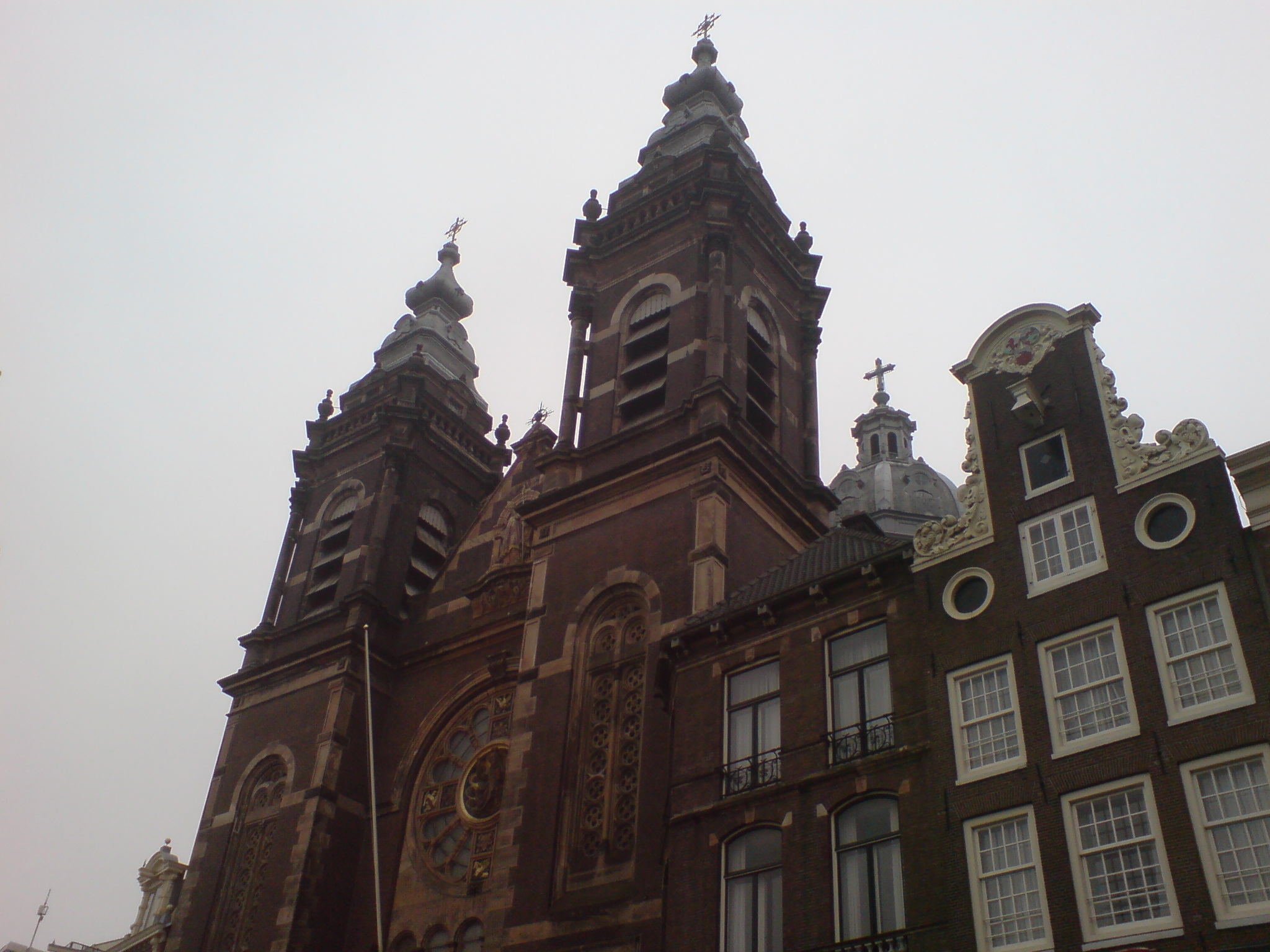 On Tuesday Zlati (A friend of mine introduced to me by Father Veliko), came to Arnhem. The plan was that he came on Tuesday here and afterwards in Wednesday morning the Trip to Amsterdam was going to happen. First we had settled that he will be in Arnhem in 12:00 o’clock. So Around 10:50 I walked down the way to the trainstation. I was on my way when Zlati ringed and told that he still, haven’t catched the train and he is not going to make it for 12:00, though he will be on Arnhem Central Station in 04:35 in the afternoon. I came back to home and on my way bought some apples as well as a oily sweet thing from the Turkish shop “Sultan” 🙂
On Tuesday Zlati (A friend of mine introduced to me by Father Veliko), came to Arnhem. The plan was that he came on Tuesday here and afterwards in Wednesday morning the Trip to Amsterdam was going to happen. First we had settled that he will be in Arnhem in 12:00 o’clock. So Around 10:50 I walked down the way to the trainstation. I was on my way when Zlati ringed and told that he still, haven’t catched the train and he is not going to make it for 12:00, though he will be on Arnhem Central Station in 04:35 in the afternoon. I came back to home and on my way bought some apples as well as a oily sweet thing from the Turkish shop “Sultan” 🙂
Around 3 I took my way to the city center again, on my way I had toleave Sali’s laptop in his home. I had taken his laptop to re-install Windows and setup his Windows in Bulgarian as well as configure it to be able to watch Bulgarian TV channels online.
In order to achieve that I used a proxy donated to me by Amridikon. Thanks Amri!
To make Windows Vista Home Premium to Bulgarian I had to use a small proggie “Vista Change Language 1.0”. I had to burn the program to a CD and boot into it and then use the downloaded language pack to change the vista text language to Bulgarian. I did so all went well, unfortunately after an upgrade the text in the menus did screw up. So I have to boot again in the Vista Change Language 1.0 boot CD and revert it back to Bulgarian.
Then I had to disable Windows Vista updates in order to prevent the same language mess up to occur again. This was a little out of the topic, but I decided it’s nice to have it on paper.
So back to where I was with my TTA .. I took Zlati from the train station,we went to Sali and he treated us with some kind of traditional turkish soup meal. The soup was quite nice btw. He was extremely happy that he could watch Bulgarian TV’s online through the bg.gledai.tv website. I was glad to that God helped me and blessed me in succeeding in all the things I mentioned above. Afterwards we went with Zlati and Koko to Albertheijn picked up a beer and a couple of other things. Then I and Zlati went to my place where we used my notebook to research about places of Interest, we would like to attend in Amsterdam. We went to bed around 2 o’clock at night.
At the morning we went to the train station. I suggested that we go a little earlier because I thought, well it might be better to be earlier in the city for to have more time to walk and take a look at its significant things in it. We were on the train station 8:10 and had the intention to take the first train at 8:29, however God had other plans for that.It seemed that we have to wait and buy a ticket for after 9:00, otherwise Zlati couldn’t use his train card for my discount.He was quite irritated by the fact that I suggested that we went to the train station so early since he was quite sleepy in the morning because we went to bed so late.
Anyways I got a coffee from the trainstation waiting-room coffee machine.And, eh the coffee there is expensive, be careful if you travel in the Netherlands by train.
The coffee costed 1.50 per cappuchino, huh … We catched a train in 9:29 and we were in the capital of Amsterdam in 10:40.
I was so excited! Yes the trip worthed the price of 16.30 EUR (with the 40% discount). Amsterdam is a really nice city, especially considering it’s architecture. And I saw such a big shops and so many things to choose from … The whole city is full of canals and boats are traveling through it.
We went to music store, wow there was so much music in it.
We entered a lot of Catholic Churches in one of the Catholic Churches there was an orthodox icon of St. Nickolas! So I made the sign of the cross and prayed the Saint to pray God for me the sinner.
With our arrival right after we went out of the central station I saw a bookstore,so I proposed Zlati to enter. It seemed that was a protestant Christian bookstore. Even though a protestant one the people there at least were believing in our Lord and Saviour Jesus Christ.
I had a small chat with one of the guys asking if they have Orthodox Bible, It seemed they haven’t so I started telling him about the advantages of being Orthodox Christian. I explained him how I became orthodox after God gave me the faith and transformed my life.
The bookstore had a free/coffee and tea.So each me and Zlati took a cappuchino. It was so nice God gave me a hot drink in the Early morning in Amsterdam.
A lot of people are insane in that place, I saw a lot of pod smokers on the street.
On a lot of places the air had that typical pod stell. We saw a lot of Museums, we tried to use a citymap although in a lot of cases un-succesful. We saw so many Churches, Madam Tusad’s museum,as well as Anne Frank museum, the tulip museum.
There was also sex, museums we saw on our way and even this freaks had gay museum. We saw some road building in progress where a couple of people were building a road on top of pillars, right above the water! 🙂 The city is full of old buildings most of which originating from 16th century. The Architecture is really amazing. The parks and everything and the terraces had that typical European style which I’ve seen in movies showing people from the 18thor 19th century drinking coffees on the balconies. We took a lot of pictures. Unfortunately I still haven’t taken the pictures from Zlati. We entered into a shop which was selling buddhist, hindu and indian statues and souvenirs to warm a bit as the weather outside was coldy.
There we had a nice chat with the storekeeper, about religion and about my Orthodox faith in Our Lord Jesus! He mentioned that near around there is an Syrian Orthodox Church. So went to seek for it. After some rambling we found it but unfortunately it was already closed the time was quite late over 18:00, so it was quite normal to be closed.The style of the Church didn’t really much differentiated from the rest of the Catholic Churches.
Earlier we went into a Church, whether they had that modern exposition, again we went their to warm ourselves (it was such a cold day).
The Church inside was nice but the pictures,they was selling on the expo was really terrible, a lot of sado-mazo and perverted motives in the pictures …
I was saddened to see that they have de-sacrated a holy place like that. Well it’s true that the Roman catholics stepped aside from the orthodox faith some time ago but still they are believing Christians and therefore there temples are holy to some degree too … therefore such an abomination really shouldn’t happen.
The good thing was that in the Church they even had made toilets inside the church we could use 🙂
The Church wall paintings were displaying the way our Lord Jesus has walked on it’s way to final execution by the jews, carrying his cross on the way to Golgotha.
Around 18:30 we went to the street where the so famous prostites and drug addicts street was the “RED LIGHTS” – so famous all around the world ….
I couldn’t believed my eyes, prostites staying behind windows half naked waiting for a customer to hire them for sex …I have heard about that place but I really couldn’t imagine it could legally exist in the center of a metropolitan city like Amsterdam.
We walked in that “wicked” part of the city for around hour.
There were all kind of junkies people who looked really criminal, the prostitutes on the windows. Sex shops, sex video rooms, you name it .. all the disgusting stuff you could imagine. After this walk we went to the train station around 8:00 and took the train back to Arnhem. The whole day went quite flawless,God has heard our prayer to keep us from evil and give us safe journey.The whole trip was really relaxing for me! Praise the Lord for his great mercy towards me the sinner for giving my eyes to see all this things!
Tags: apples, bg, bookstore, boot cd, cappuchino, Catholic, center, change language, city, configure, Father, language pack, laptop, menus, Pack, place, pod, proggie, protestant, proxy, quot, Sali, screw, shop, sultan, sweet thing, text, text language, train, train station, trainstation, Trip To Amsterdam (TTA), TTA, tv channels, tv website, Veliko, Wednesday, wednesday morning, windows vista home premium
Posted in Everyday Life | No Comments »
Thursday, January 12th, 2012 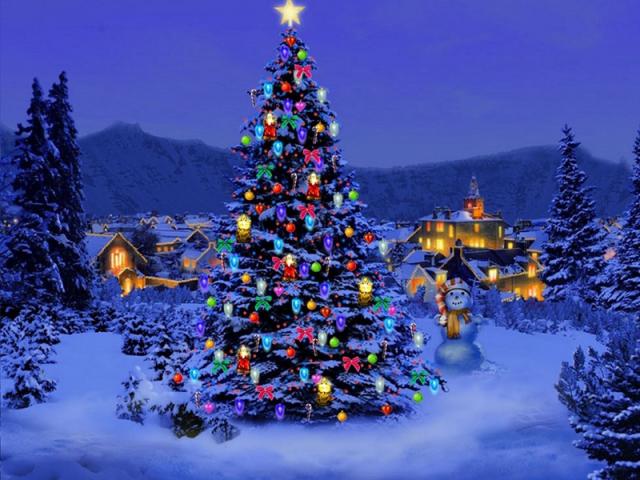
Christmas has just passed away. As a Christian I was curious what is the reason in so many Christian countries, we decorate Pine trees and I did a quick research on the topic. In this small article, I'll present my findings.
Observing the Christmas Pine Tree tradition has been quite ancient and probably according to many sources dates back to the XIIth century.
The first written records of a Christmas tree are of an anonymous Frenchman who visited Strasbourg, Germany in 1601. His description of the decoratd pine tree says like "wafers and golden sugar-twists (Barley sugar), roses cut out of many-colored paper, apples, gold foil and sweets."
Later in the 1800s, the local German Christmas pine tree tradition was spread across America by German emmigrants.
In UK the Pine tree decorating tradition appeard in 1841, where a royalty (Prince Albert) decorated his castle (Winston Castle).
A little later after the Queen Victoria adopted the pine tree, United Kingdom citizens started to decorate pine trees for themselves, folliwng the highly regarded Queen.
Usually the pine tree has historically been decorated with gifts as well as an Bright star is put atop.
One of the Christian interpretations for the Christmas tree is that it represents the same Cross (tree) on which Christ was crucifixed. Then after Christ's resurrection because of (or through that) tree, the humanity received the Lord big spiritual blessings. These blessings are represented by the gifts decorated on the Fir tree. The pine tree itself is in Christianity a reference for the symbol of Salvation that we received came from the Holy Cross, where our saviour was crucified.
The Fir is decorated with lights to represent the joy and the lights of Christmas (that burns in our hearts), the star atop the tree is a reminder of the Star that rised in the East during the night of Christ's birth as we read in the gospels.
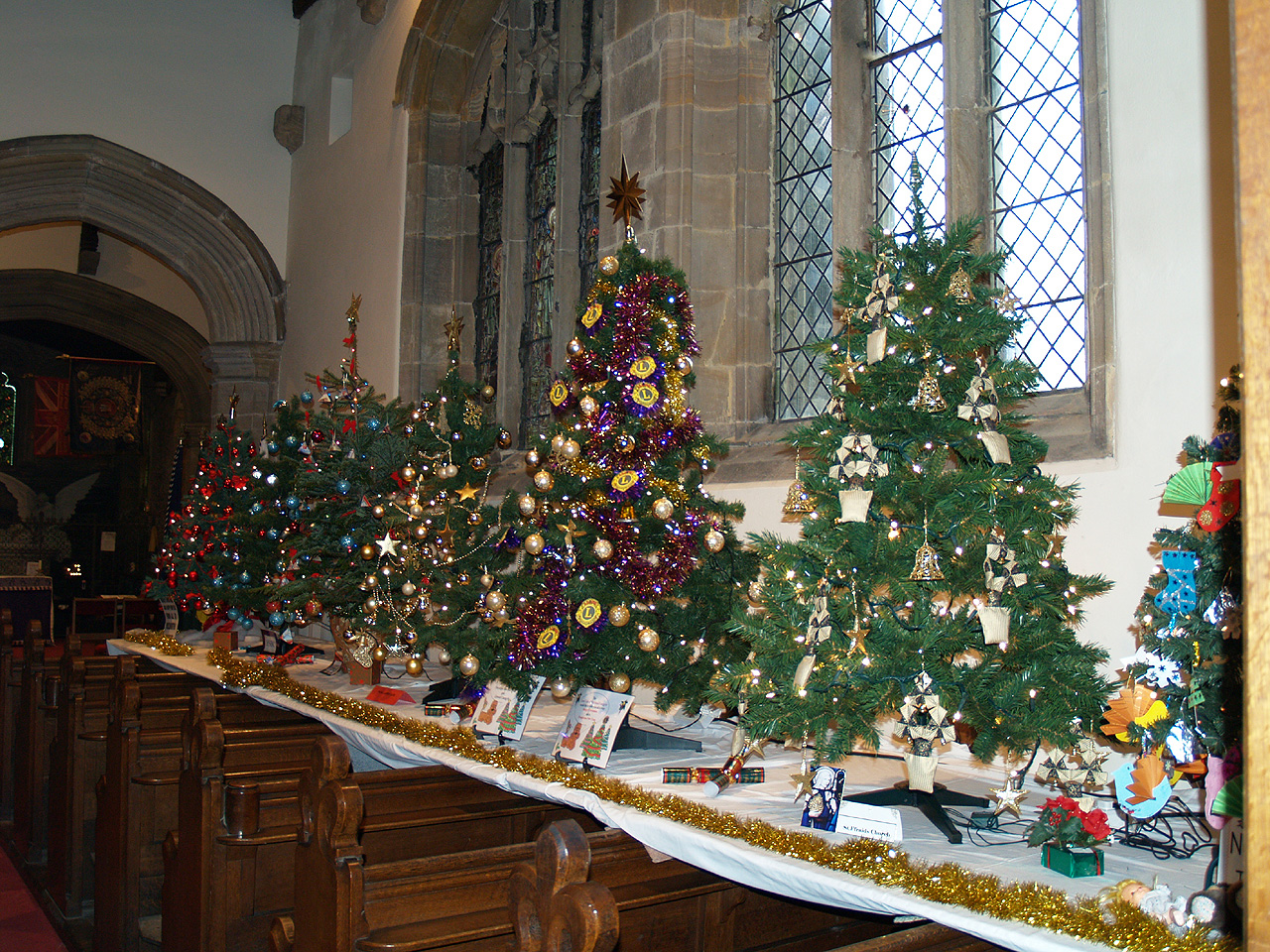
Decorating Pine trees is commonly observed mostly in Roman Catholic Church and often followed by some protestant denominations and less used in Orthodox Church (though this is changing nowdays).
In Eastern Europe, the Christmas tree appeared quite 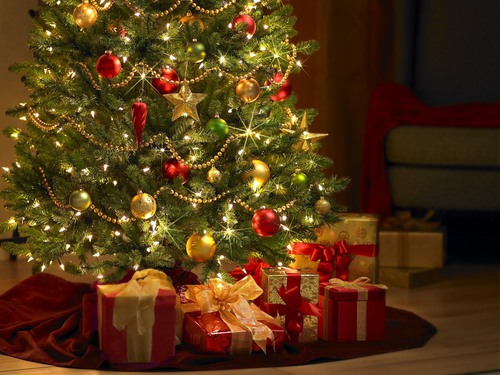 late and the whole concept was unknown in the Orthodox Christian countries, just until the end of the 19th century.
late and the whole concept was unknown in the Orthodox Christian countries, just until the end of the 19th century.
With the recent severe globalization the pine tree was silenty adopted in almost all parts of the world, including even communist countries and even sometimes in muslim ones.
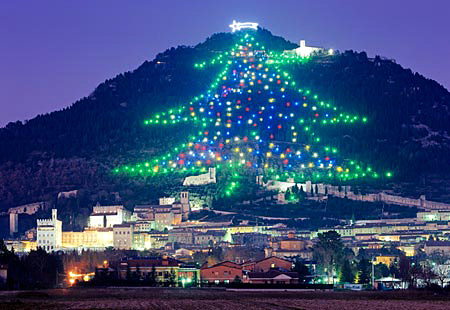
Unfortunately, the relation between the Fir tree and our Christian faith is little known today and with the years to come it will be less and less associated with Christianity.
Here are few interesting legends which I found explaining, some of the possible roots of the Christmas tree decoration:

1. Legend of the Pine Tree Saving the Holy Family
When the Holy family was pursued by Herod's soldiers, many plants offered to provide them with shelter.
One such plant was the Pine tree. With Mary too weary to travel any longer, the family stopped at the edge of a forest to rest.
A gnarled old Pine which had grown hollow with the years invited them to rest within its trunk.
Then, it closed its branches down upon them, keeping the family safe until the soldiers had passed.
Upon leaving, the Christ Child blessed the Pine and the imprint of his tiny hand was left forever in the tree's fruit… the Pine cone.
If a cone is cut lengthwise, the hand may still be seen.
2. Pine tree and Easter Legend

There is a legend that pine trees "know" when it's Easter.
The pine trees start their new growth in the weeks before Easter.
If you look at the tops of the pine trees two weeks before Easter you'll see the yellow shoots.
As the days get closer to Easter Sunday, the tallest shoot will branch off and form a cross.
By the time Easter Sunday comes around, you will see that most of the pine trees will have small yellow crosses on all of the tallest shoots.
This really happens we live where there are lots of pines,
and each year this actually happens, it is amazing to watch,
and the process of the new growth appears as crosses on the ends
of each branch.
I've not personally observed that, but according to people who live in pine tree forest areas this is a fact.
3. Legend about M. Luther and the Pine tree
Martin Luther, founder of the Protestant religion, was taking a stroll through the woods late one night.
The sky was clear and many stars were shining through the branches of the trees,
giving the impression of twinkling lights.
Luther was so captivated and inspired by the beautiful brilliance of the sight
that he cut down a small evergreen and brought it home.
He recreated the stars by placing candles upon the tree's branches to imitate
their radiance and presented it to his children.
This story explains why, the pine tree become so wide spread initially in the "western world", as it gives some connection between the Pine tree and Protestant Christianity.
4. The Children Legend of the Fir Tree (Kids Story)
On the night of the Christ Child's birth, all living creatures, both flora and fauna, traveled to Bethlehem bearing gifts.
The Olive tree, for example, brought its fruit and the Palm tree its dates.
But the little Fir tree had no gift and was so tired that it was unable to resist when the larger trees pushed it into the background and hid it from view.
But then, a nearby Angel took pity and commanded a cluster of stars to descend and rest upon its delicate boughs.
When the Baby Jesus beheld this lovely lighted tree, he smiled and blessed it,
declaring henceforth that Fir trees should always be filled with lights at
Christmastime to please little children.
When Christianity first came to Northern Europe, three personages representing
virtues were dispatched from Heaven to place lights on the original Christmas tree.
These personages were Faith, Hope and Charity.
Their search was long, since they were required to find a tree as high as hope, as great as love and as sweet as charity.
In addition, the tree had to bear the sign of the cross on every bough.
Their search finally ended in the forests of the North where they found the Fir.
Lit by the radiance of the stars, it became the first Christmas tree.
The triangular design of the Fir has also been usedto describe the Holy Trinity of God the Father, The Son and The Holy Spirit.
Eventually, converts began to revere the Fir as God's Tree…as they had once revered the Oak.
By the Twelfth Century it was being hung, upside-down, from ceilings at Christmastime
in Central Europe, as a symbol of Christianity.
5. The Paradise Tree Legend
A very old and delightful European custom centers around decorating a Fir tree with apples and small white wafers which represents the Holy Eucharist.
These wafers were later replaced by small pieces of pastry cut into the shapes of stars, angels, hearts, flowers and bells.
Eventually additional pastries were introduced bearing the shapes of men, birds, roosters and other animals.
During the middle Ages, around the Eleventh century, religious theater was born.
One of the most popular plays …
The German mystery play concerned Adam and Eve and their fall and expulsion from the Garden of Eden, represented by a Fir tree hung with apples.
This tree was symbolic of both the Tree of Life and the Tree of Discernment of Good and Evil, which stood in the center of Paradise.
The play ended with the prophecy of a coming Saviour. For this reason, it was often enacted during Advent.
The one piece of scenery, the "Paradeisbaum" or "Paradise Tree" become a popular object and was often set up in churches.
Eventually it also found its way in private homes and became symbol of the Saviour.
Since the tree was representative not only to Paradise and the fall of man, but also the premise of salvation.
It was hung not merely with apples, but with bread of wafers (Holy Eucharist) and often sweet to represent the sweetness of redemption.
In some areas of Bavaria, fir branches and little trees decorated with lights, apples and tinsel are still called "Paradeis".
According to some other Christian legends, it was a Fir tree that grew as the Tree of Life in the Garden of Eden.
When Eve plucked its fruit, the foliage and flowers shrank to nothing but needles.
Only on the night of Nativity would the Fir tree bloom again a moment marked perhaps by the Christmas tree we Christians use.
Of course these are just legends and as with every legend there is plenty of romantism included.
Nevertheless I consider most legends similar to proverbs contain deep truth and contain truthful facts. Moreover knowing the legends of our forefathers connect us to who and what we are and from antropological point of view is precious knowledge, we should try to sustain and spread to our children.
Tags: Auto, birth, Bright, Catholic, center, Child, Christ, christian countries, christian interpretations, christmas christmas, christmas pine, christmas time, christmas trees, city, Cross, custom, Customs, Decorating, description, Draft, East, emmigrants, fir point, fir tree, foil, forest, german christmas, gold foil, height, Herod, hill, img, imprint, kingdom citizens, legend of the christmas tree, Lord, muslim, nbsp, pine trees, prince albert, protestant, queen victoria, quot, radiance, reason, resurrection, rised, Roman, roman catholic church, Salvation, saviour, Search, shelter, spiritual, spiritual blessings, story, sugar roses, symbol, symbol of salvation, time, topic, tree, tree tradition, XIIth, xiith century
Posted in Christianity, Everyday Life, Various | 1 Comment »
Saturday, January 7th, 2012 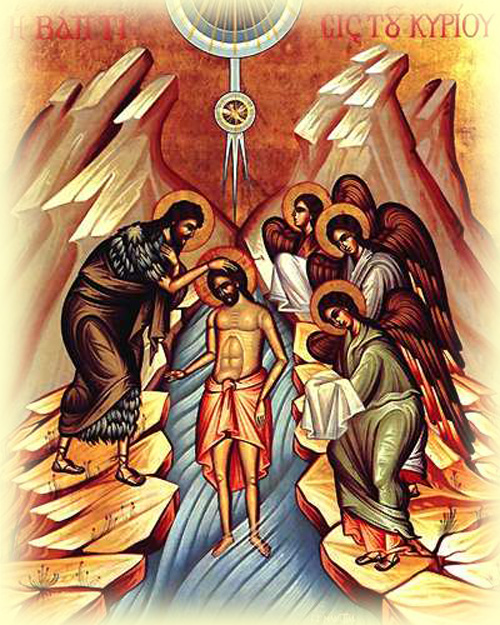
On 6th of January in our Bulgarian Orthodox Church just like in the most Christian realm, we celebrate the great feast of Theophany / Epiphany (Baptizm of our Saviour Jesus Christ in Jordan).
What exactly we celebrate is the Baptizm of our Saviour Jesus Christ in Jordan by st. John the Baptist (John the Forerunner as we call him in the church). This day is very important for us as Christians and this is why the holy fathers in the church has ordered this feast to be among the 12 most important feasts in our Church, the so called (Lords feasts).
On Theophany's day it is a rule in orthodox Church that the Great Blessing of Water is performed. The Blessing of the water and the preceding holy water from the priests blessing is taken by Church layman and we bring a little of this water to our homes to bless through that our homes.
In our Church belief the Holy Water from the Theophany feast is considered the most powerful in spiritual sense holy water as this water is the same water with which our sinless Saviour and lamb (Son) of God Jesus Christ was baptized in Jordan.
The reason why we call the feast Theophany is because God in his essence of Holy Trinity appeared clearly to mankind for a first time in Human history. Our Holy Trinity (3 essence God in one indistructable and insaparatable God – one God as God said for himself in the beginning of writtings) has revealed himself in front of all the people gathered along John the Baptist in Jordan waiting to be baptized in his three essences:
1. God the Father spoke from heaven manifesting and testifying about Jesus Christ being his beloved and only son and saviour of mankdin
,br />2. God the Son (Jesus Christ), has physically appeared to receive the baptizm to fulfill all righteousness and (the old testemential prophecies) and to begin his 3 years mission on earth.
3. God Holy Spirit) has descended from heaven on Jesus Christ in a publicly observable form of a dove
Theophany's feast is called by some english speaking orthodox christians Epiphany, but this is a term less used in orthodox christendom and much more spread in Roman Catholic one.
The Gospel readings in the church tell of the Lord's baptism by John in the Jordan River. The epistle reading of the Divine Liturgy tells of the consequences of the Lord's appearing which is the divine epiphany.
After the end of the st. Basil the Great Holy Liturgy served, the Great Blessing of Water is performed by one or more priests (depending on the number of present priests). The meaning of the blessing of the waters meaning is to show that mankind and all of God's creation, were created to be blessed and filled with the sanctifying of God's presence.
A very local unique bulgarian tradition on this number is that if the great blessings of water is performed by a priest near a river or a sea shore the cross be thrown in the water in order to bless the waters. 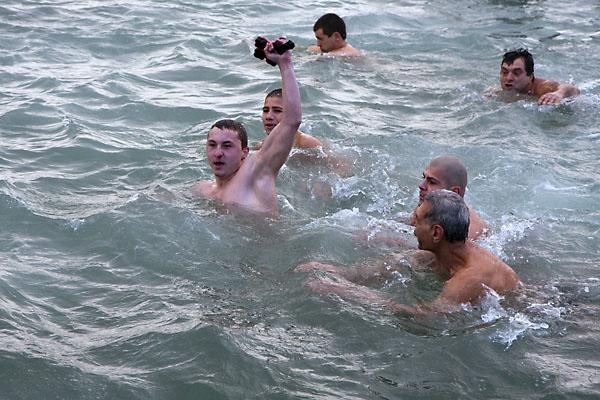
Then a number of brave man jump in and do a race swimming aiming to pull out the crucifixion of the water. It is believed that the one who could pull out the cross will get God's great blessings through the upcoming church year.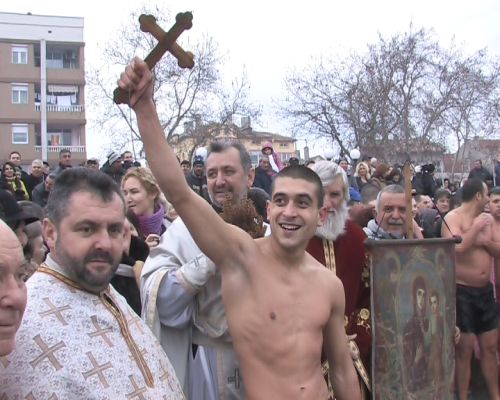
Let us pray trust and hope on God to also appear to us who seek him, and show us his Holy Trinity wholeness mercies just like he did himself to the people waiting for Baptizm from John the Baptist by the holy prayes of the Theotokos and his holy saints and all heavinly hosts. Amen
Tags: Auto, baptizm, belief, br 2, bulgarian orthodox church, Catholic, divine, doveTheophany, Draft, epistle, essence, Father, feast, form, god jesus christ, god the father, great feast, Holy, holy spirit, holy trinity, holy water, indistructable, john the baptist, john the forerunner, layman, mankind, number, one god, reading, realm, reason, Roman, saviour jesus christ, son jesus christ, son of god, Spirit, spiritual, spiritual sense, st john the baptist, theophany, time, Trinity, writtings
Posted in Christianity | No Comments »
Saturday, December 24th, 2011 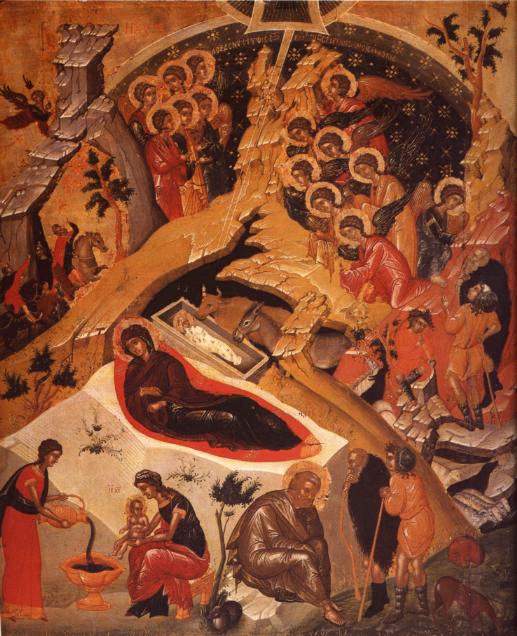
Christ has born! Merry Christmas and Happy Holiday to all my readers!
The meaning of Merry Christmas comes from Christ Mass , the word has changed to (Christmas) through the years.
The origins of the word comes from the western world and especially has a tight relatin with Latin language and the Roman Catholic Church.
In Eastern Orthodox Churches, we say Chestit Rojdestvo Hristovo , which translated to English is Happy Christ's Birth by this tring to put more accent on the real significance of the feast, which is Christ's birth.
It's a pity nowdays many people forgot the real meaning of Merry Christmas but just celebrate without really realizing the deep spiritual meaning this two beautiful words contain.
Our Bulgarian Orthodox Church will mark the Christ's birth with a Holy Liturgy early in Sunday's morning tomorrow 25th of December.
With these bright feast I wish to all my blog readers;
A lot of Best of Health, Good Fortune, Loving Kindness, Hope, Faith, Love and Personal and Professional Success!
May God bring in our hearts the Angels joy which saluted our Saviour Jesus Christ's birth 2011 years ago.
Have a great Christmas!
Tags: blog, bulgarian orthodox church, Catholic, christ mass, christmas through the years, Churches, eastern orthodox churches, feast, good, good fortune, Happy, happy holiday, health, holiday, holy liturgy, Hope, joy, Kindness, latin language, loving kindness, May, Merry Christmas, morning tomorrow, origins, Professional, professional success, relatin, Rojdestvo, Roman, roman catholic church, saviour jesus christ, significance, spiritual, tomorrow, tring, word comes from
Posted in Christianity, Various | 1 Comment »
Friday, June 17th, 2011 
These days it’s ultra modern in Business and Business Communities, that the way business is made or business possibilities are discussed are directly influenced by altered understanding of Buddhistic world views.
Today less and less people realize that the modern day Western and Eastern Christian countries are rapidly loosing their Christian mark.
It was Christianity and Christian philosophy, thanks to which Christian countries has advanced to the material goodness level, architectural greatness, science improvements and civilization achievements that we the Europeans and other Western societies like Americans enjoy today.
As time ticks on the world is constantly becoming more and more Anti-Christian. From the times when Christianity was officially wide-spread and accepted and being a Christian was a sign for personal qualities and goodness, it’s now considered to be almost a crime or being insane if you have faith in Jesus Christ as God’s Son and a Saviour of mankind.
Business ethics practices from the past, which were often based on Christian ethics has also seriously changed these days.
It was due to Christianity and the Christian civillization due to which we had a dozens of genuine musician like: J. S. Bach, Beethoven, Verdi, Brahms, Tschaikovsky etc. the list of great people and musicians goes innumerous here.
The Roman Catholic and Easter Orthodox Christians thanks to which works, science has advanced is also innumerous, just to name a few for instance:
Nicolaus Copernicus, Galileo Galilei, Max Planck, Marie Curie, Theodosius Dobzhansky, Isaac Newton, James Clerk Maxwell, Johannes Kepler
again this is just a small chunk of all the great Christian people who by their talents has revolutionized the world for good.
However nowdays education is changed seriously and as many people should have noticed Christianity and historic relation between science and Christianity is trying to be covered.
Moreover the historic importance of Christian faith and it’s surrounding philosophy is forgotten, not to mention that officially the history of the world until the 18 century is mostly, a history of Christianity and it’s influence on society.
In these days of Christian apostacy, many of the business people in their look up for ways to become superior and rule over the masses has turned into various long forgotten sects and heresies which were publicly announced by ancient Christian Church as body and soul destroying dangerous teachings.
It’s trendy today that the confucionism or hindu influenced beliefs about the world and the way stuff works, are preached and used in businesses and business organizations.
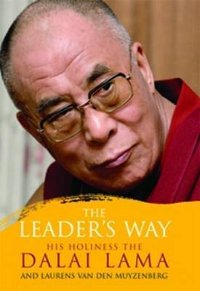
It’s classics nowdays that people run a business, after building a group of people, over which hierarchical manipulation based leadership is exercised.
Most oftenly people who enter into a new business field, try build a groups of people who are introduced without having conscious idea to veiled alterated buddhistic philosophy to match certain people’s idea or beliefs about the world.
These groups usually consist of people ranging from hundereds to thousands. Usually each of these business groups created, has a leader who is both leader in terms of (being the group boss / executive) and also a spiritual leader.
Interaction between the group members are purely based on manipulation. People are teached they have some special sensitivity for the surrounding environment which they can develop.
They’re teached they must always be positive, the group leaders (teachers) does try to suggest to the group what the group members understanding of positive should be.
In those business groups, people are taught by the leaders to be positive, while the leaders themselves are not positive (one cannot be positive without God!). People are constantly told “be positive”, “be positive”, while the people who teach them this are not positive at all and evil often cruel!
In other words group members are being re-taught the basics of how they perceive themselves and how they should perceive the world around them in a light that fits well with the business organization they’re membering in.
Consequently people are taught to loose their ego.
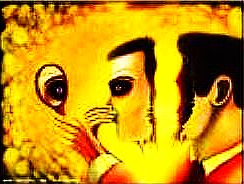
This is one of the most essential parts of this modern day business false teachings. In reality loosing the ego is loosing one’s standing ground and through that the person in the group becomes easily manipulated by other group members.
When people loose their ego basicly they loose their protection against being easily manipulated, they loose their idea about what is good and what is bad, what is right and what is wrong and who in reality they’re.
I believe also the no-ego philosophy has also a straight relation with the modern day society problem of NO IDENTITY issue , I have previously blogged about.
Being exposed to this “business” approaches in that poor state one start easily accepting suggestions from the group leaders or other group members and could end up in a state where he is totally manipulated (a spiritual slave of the group leader GURU).
After time passes and a person is involved in so many meetings, the group members gets so much bounded together that they have to constantly meet each other and discuss things, (often senseless things), nevertheless the pointlessness of the many discussions this meetings starts giving them the feeling of great importance or in other words reveals them the ultimate life meaning.
Consequently, when the new business group entity is tight enough, the group is instructed by the leaders about what kind of business moves will be best for each of the group individuals and the overall business the group belongs to.
At this state each of the members should obey wholeheartedly, if somebody tries to question the leadership decisions, the leader does incite the whole group members against the disobeying member and usually the members gets destroyed.
These business group building philophy is also influenced by antrophology and observence of animal behaviour’s let’s say coyottes or wolves.
In animal world usually each pack of wolves had their leader and the pack only attacks if the leader hits and if the whole group is together.
Same kind of thing comes to business built entities based on this loose your ego / no-ego philosophies.
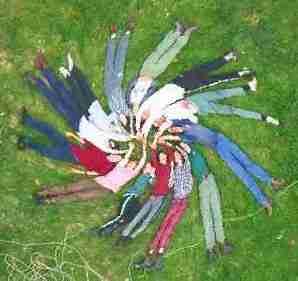
A lot of pseudo beliefs about para-psychology and experimental western psychology is also involved and preached to the group members.
Loosing the ego philosophy in Business is directly influenced by buddhistic idea about Nirvana and spilling the self in the ultimate worldly reality (e.g. becoming one with the whole nature).
This kind of belief is seriously anti-christian and against the spiritual goal in christianity which is not the emptiness like in buddhism and the other eastern religions, but the goal is fullness in God.
We the Christians are striving to fill ourselves with God’s Spirit – The Holy Spirit, whether buddhists are trying to empty themselves by everything that’s binding them to reality (obviously they also try to empty themselves by God who has initially created man as his vessel).
Also in business, I’ve noticed in my experience that it’s common people who are taught business in universities or are introduced to business are taught philosophies which are very typical for western buddhist teachings.
Just like in buddhism people are taught there is no absolute good or evil and there is no good and bad and everything one does is good, if he sees it as good (we’re the one who define our lifes and realities)!!
Think for a while and see for yourself how insane this kind of philosophy is, let’s say I kill a man who I hate, that’s fine according to this philo because I believe this man’s existence was not good in my view and his unexistence will make the world a better place, since I believe it’s that way then it’s that way DOT!!!As a Christian I must confess this is ULTIMATE INSANITY, AN ULTIMATE LIE obviously inspired by the evil which is an enemy to us the Christians as the Holy Bible teaches.
This kind of “no good and bad” philosophy is a hidden assault against our Christian roots society, faith and civillization. In Christianity we’re clearly taught there is ultimate good an ultimate evil and there is no in between!
We are also taught one can become part of the ultimate good or ultimate evil by his daily choice, e.g. (get closer to God and his Holy Angels or distance himself from God and come near the devil and his fallen angels).
Mixing spirituality and business concepts has become a sad reality of our age, I’ve seen many books being sold which were claiming to teach, “how to do business based on Zen Buddhism and other eastern religions and philosophies.
What’s even worse is that people who are involved into this kind of “innovative” taught business approaches guarantee themselves to get exposed to the ultimate evil spirituality (devilish spiritual influence), as they openly reject God’s dominion over one’s self and the world around them.
The good news is that they’re many Christian Business communities as I’ve checked online, there are many people yet who do their best to do business with other Christians or people who still keep the Christian faith and morale.
Tags: being a christian, body, Business, business communities, business ethics, business possibilities, Catholic, christian countries, christian ethics, christian philosophy, chunk, civillization, Communities, ego, galileo galilei, good, instance, isaac newton, j s bach, james clerk maxwell, johannes kepler, level, mankind, marie curie, mark, max planck, Musician, orthodox christians, personal qualities, philosophy, reality, relation, Roman, science, science and christianity, science improvements, sign, soul, spiritual, theodosius dobzhansky, time, time ticks, trend, western societies
Posted in Business Management, Christianity, Various | 4 Comments »
























 On Tuesday Zlati (A friend of mine introduced to me by Father Veliko), came to Arnhem. The plan was that he came on Tuesday here and afterwards in Wednesday morning the Trip to Amsterdam was going to happen. First we had settled that he will be in Arnhem in 12:00 o’clock. So Around 10:50 I walked down the way to the trainstation. I was on my way when Zlati ringed and told that he still, haven’t catched the train and he is not going to make it for 12:00, though he will be on Arnhem Central Station in 04:35 in the afternoon. I came back to home and on my way bought some apples as well as a oily sweet thing from the Turkish shop “Sultan” 🙂
On Tuesday Zlati (A friend of mine introduced to me by Father Veliko), came to Arnhem. The plan was that he came on Tuesday here and afterwards in Wednesday morning the Trip to Amsterdam was going to happen. First we had settled that he will be in Arnhem in 12:00 o’clock. So Around 10:50 I walked down the way to the trainstation. I was on my way when Zlati ringed and told that he still, haven’t catched the train and he is not going to make it for 12:00, though he will be on Arnhem Central Station in 04:35 in the afternoon. I came back to home and on my way bought some apples as well as a oily sweet thing from the Turkish shop “Sultan” 🙂

 late and the whole concept was unknown in the Orthodox Christian countries, just until the end of the 19th century.
late and the whole concept was unknown in the Orthodox Christian countries, just until the end of the 19th century.












